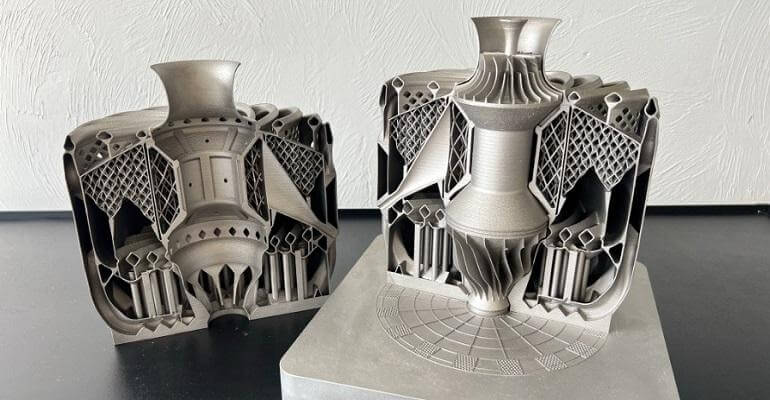
While the micro turbojet engine may be small – weighing only eight pounds – it remains a startling chunk of Inconel. The engine is a single, complete assembly, including all rotating and stationary components.
The turbojet was designed in Creo CAD software, using Inconel as the material and an EOS 3D metal printer as the production machine. “The engine is about the size of a basketball. It would probably be used for drones,” Steve Dertien, chief technology officer at PTC, said during a presentation.

The jet engine project was the brainchild of Ronen Ben Horin, a VP of technology at PTC and a senior research fellow at Technion – Israel Institute of Technology – and Beni Cukurel, an associate professor of aerospace at Technion. The two took their scientific research in jet propulsion and their engineering expertise and designed the engine for additive manufacturing.
When designing the engine, the researchers focused on:
- A lightweight design: That required sophisticated lattice modeling and generative design for material and weight reduction while maintaining the appropriate strength and performance that could match designs with more material and heavier weight.
- Self-supporting geometries for 3D Printing: That means the software had to optimize designs for printability. Creo needed to create self-supported formula-driven lattices that can be paired with printability checks and modifiers to adjust the design for printing efficiency.
- 3D printing equipment interoperability: Creo software is compatible with most 3D printing equipment for printing and post-processing. Creo provides a variety of formats, including 3MF, for sending 3D models to the market’s various printer technologies, while also allowing users to create associative models for machining operations. This micro-jet engine was printed with an EOS printer.

In a statement, Cukurel acknowledged that designing the engine with Horin was the culmination of many years of research that included staying on top of advancements in the supporting technology of 3D printing and design software. He noted that the design offers a viable way of producing micro turbojet engines.
While this machine is not the first 3D-printed jet engine — Monash University in Australia claimed that title in 2015, and GE claimed it in 2020 – Cukurel and Horin can probably claim bragging rights for doing it as one piece.
